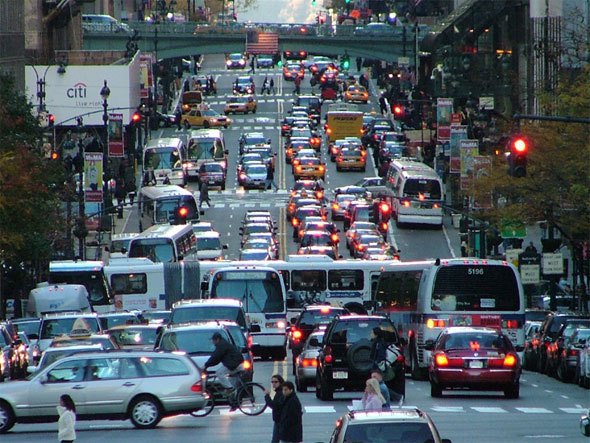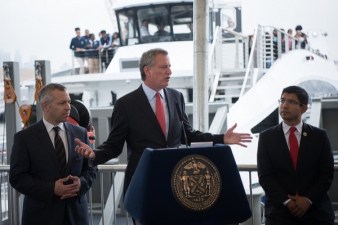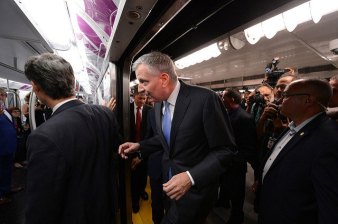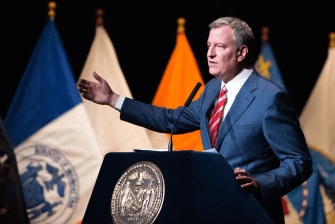Trottenberg Offers Congestion Solutions, But de Blasio Administration Won’t Touch Toll Reform
DOT plans to reduce congestion will not bring the same gains as road pricing, which Mayor de Blasio won't lift a finger to see enacted despite a supportive City Council.

Testifying before the City Council today, DOT Commissioner Polly Trottenberg said City Hall isn’t interested in challenging the idea that toll reform is up to Albany, rather than NYC.
NYU law professor Roderick Hills believes a 1957 amendment to the state vehicle and traffic law allows the city to levy “tolls, taxes, [and] frees… for the use of the highway or any of its parts where the imposition thereof is authorized by law.” In light of Hills’ analysis, the Move New York campaign has proposed a “home rule” congestion pricing model that would toll the four East River bridges and a 60th Street cordon at $2.75 — the cost of a subway ride — and tax for-hire vehicle and taxi trips in the densest parts of Manhattan.
The plan would raise $1.1 billion annually for transit, about $400 million less than the “full” Move New York plan.
But Trottenberg made clear that congestion pricing isn’t on City Hall’s agenda. “Many attorneys over a number of administrations have looked at this question very carefully,” she told council members. “They all determined that the city doesn’t have the legal authority, that we need to get that authority from the state.”
Trottenberg, NYPD Transportation Chief Thomas Chan, and their colleagues outlined other steps the city plans take to address traffic: new curbside regulations, off-peak commercial deliveries, investment in bike and bus infrastructure, and more enforcement against placard abuse, blocking bus lanes, and other congestion-inducing violations.
Those proposals were received positively, but council members said the city should also pursue road pricing — which would reduce car trips in the densest part of the city with the added benefit of providing revenue for subways and buses. Corey Johnson, who represents some of the most congested parts of Manhattan, told Trottenberg the DOT plans were “tinkering around the edges.”
Pressed by Council Member Jumaane Williams to elaborate on the administration’s position on toll reform, Trottenberg called it a “tremendously useful tool,” but said the mayor does not see it as politically viable.
Speaking to reporters outside the hearing, Move New York campaign director Alex Matthiessen disputed Trottenberg’s position that bridge tolls are the sole authority of the state. “There is no question in our mind the city absolutely does have the authority,” he said. “[Professor Hills] has done extensive research on this and says that, actually, the issue hasn’t been looked at in any serious way since 1957.”
Council members who want to see toll reform enacted don’t need de Blasio to conduct a legal analysis and draft legislation, said Matthiessen. “Let’s let the City Council take the first crack at looking at this issue,” he said.

The mayor has teased a forthcoming congestion plan for months, but Trottenberg told reporters the plan would be a “rolling” one, of which the broad concepts presented today were the first piece.


